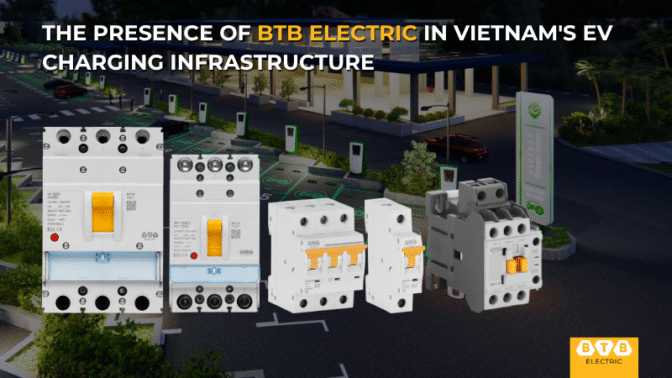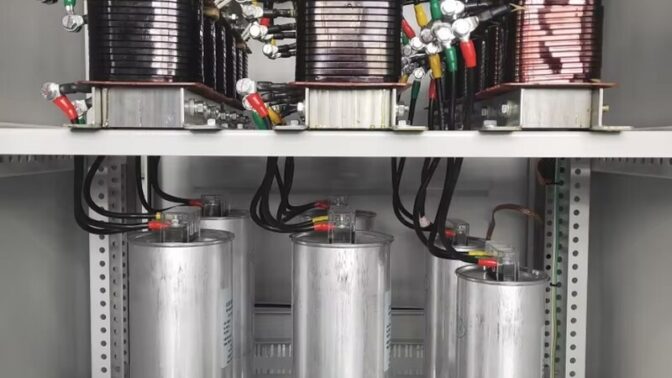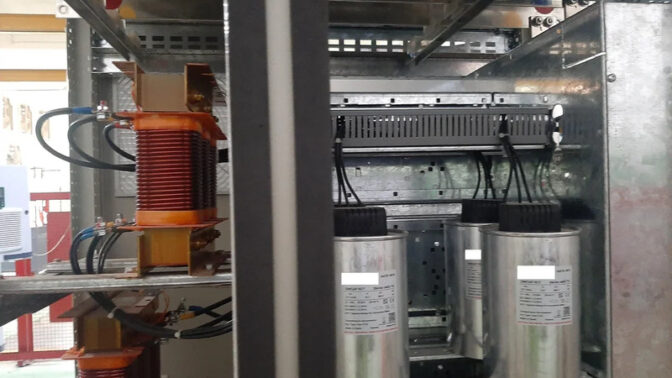01-08-2025
What is an MCB? Structure, Classification and Applications
The MCB is one of the most familiar types of circuit breakers used in daily life, especially in households, gradually replacing traditional fuses. However, many families may not know this term and often refer to it as a “mini circuit breaker” or “snap-in breaker.” So, what exactly is an MCB? How does it work, and what are its real-world applications? BTB Electric will provide a comprehensive explanation in the following overview.
What is an MCB?
MCB stands for Miniature Circuit Breaker, a type of circuit breaker designed to automatically switch off the electrical circuit in the event of an overload or short circuit. Compact in size, MCBs are used in both single-phase and three-phase electrical systems with relatively low current ratings.
Thanks to their reusable capability, MCBs have increasingly replaced traditional circuit breakers in household electrical systems. Installing MCBs provides users with peace of mind when using electrical equipment, minimizing the risk of short circuits or fires that could damage appliances or endanger human safety. Additionally, three-phase MCBs can be applied in industrial electrical systems.

MCBs offer numerous features that help protect electrical systems. They are designed to trip automatically in case of overloads or short circuits. When voltage or current exceeds safe levels, the MCB disconnects the circuit to protect the system and its users. MCBs also help in effective power distribution, ensuring the system runs stably while minimizing overloads, energy loss, and equipment damage. Another useful feature is fault identification, allowing users to monitor and control their electrical systems more precisely and efficiently.
Structure and Operating Principle of an MCB
An MCB consists of four main internal components:
- Contacts: Typically includes both fixed and moving contacts.
- Arc Arrester: The MCB uses a semi-enclosed arc placed inside a sealed housing, with vent holes. In contrast, open-type arc arresters are used in larger breakers like MCCBs. The arc arrester usually contains stacked metal plates to aid arc extinguishing.
- Cut-off drive mechanism: Includes both manual and electromechanical tripping mechanisms. Manual operation is common for MCBs with lower current ratings, while electromechanical tripping is used for higher currents.
- Tripping Mechanism: Protects against overloads and short circuits, typically in the form of a thermal bimetallic strip (thermal release) or an electromagnetic coil (magnetic release). When a fault occurs, the mechanism trips and interrupts current flow through the breaker.
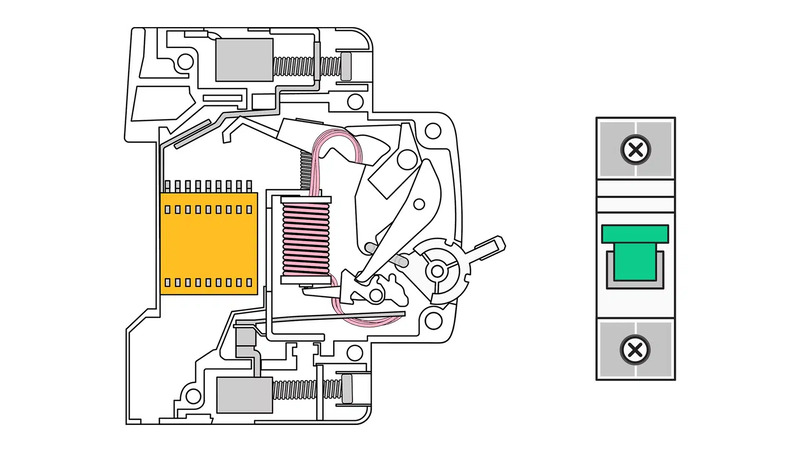
MCBs operate similarly to other breakers with overload and short circuit protection. When the current exceeds the rated threshold, the bimetal strip heats up and bends, triggering a spring-loaded mechanism that opens the contacts and disconnects the circuit. To restore power, the MCB must be manually reset. This mechanism protects the electrical system from overcurrent and overload conditions.
MCB Technical Specifications
Key indicators for MCB performance include:
- Ue: Rated operational voltage (Volts)
- Ui: Rated insulation voltage (Volts)
- Uimp: Rated impulse withstand voltage in polluted environments (Volts)
In: Rated current (Amps), typically up to 125A - Icu: Ultimate short-circuit breaking capacity (Amps), usually up to 10kA
- Ics: Service short-circuit breaking capacity, typically 75%–100% of Icu
- Icw: Rated short-time withstand current (Amps)
- C16, C32, C40, etc.: Denotes MCBs with rated currents of 16A, 32A, 40A respectively
Common MCB Classifications
MCB’s can be classified by:
Number of Poles/Phases
- 1P (Single-pole): Connects to a single live wire (L); typically used for lighting or socket circuits.
- 2P (Double-pole): Connects to one phase and one neutral wire (L and N); used in single-phase systems.
- 3P (Triple-pole): Connects to three-phase wires (L-L-L); used in three-phase systems.
- 4P (Four-pole): Connects to three-phase wires and one neutral (L-L-L-N); also used in three-phase systems.
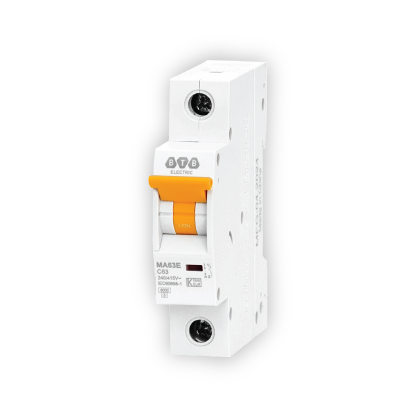 |
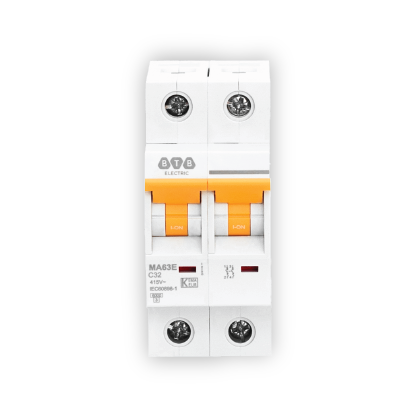 |
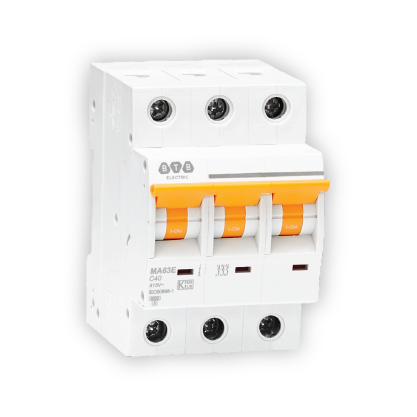 |
Rated Current (In)
- 1A–10A: For lighting or small loads (e.g., mist fans, radios, heaters).
- 12A–25A: For bathrooms, corridors, prayer rooms, storage rooms.
- 25A–50A: For living rooms, bedrooms, shared spaces.
- Above 50A: For whole-floor or main circuit applications.
In most households, a 63A MCB is used as the main breaker. Higher current MCBs are suitable for commercial uses such as restaurants, spas, or small supermarkets.
Tripping Characteristics (Trip Curve)
- Type B: Trips at 3–5× rated current; used for resistive or low-inductive loads, ideal for household systems.
- Type C: Trips at 5–10× rated current; used for inductive loads like small motors, transformers, fluorescent lights.
- Type D: Trips at 10–20× rated current; used for heavy inductive loads in industrial settings.
- Type MA: Trips at up to 12× rated current; protects motors with high inrush currents.
- Type K: Trips at 10–12× rated current; protects motors and inductive loads.
- Type Z: Trips at 2–3× rated current; designed for sensitive devices such as semiconductors.
MCB Applications
MCBs are essential in single-phase residential, commercial, and sometimes even three-phase industrial electrical systems. You’ll commonly find them in electrical panels of homes, apartments, offices, and hotels. They can also be used as dedicated breakers for high-power appliances such as air conditioners, induction cookers, or water heaters.
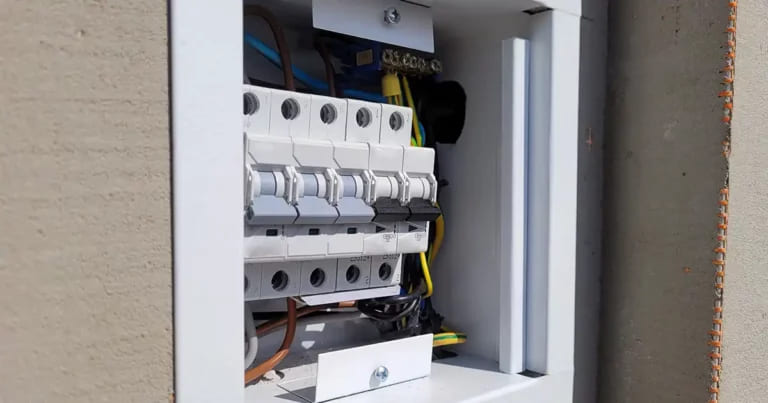
An MCB monitors voltage and current on a circuit. In the event of an overload or short circuit, it trips to prevent equipment damage or fire hazards. Key advantages of MCBs include compatibility with single-phase systems and low short-circuit breaking capacities (typically 4.5kA–10kA), making them ideal for small devices. Their compact size also allows for flexible installation beyond the central control panel.
MCB vs. MCCB
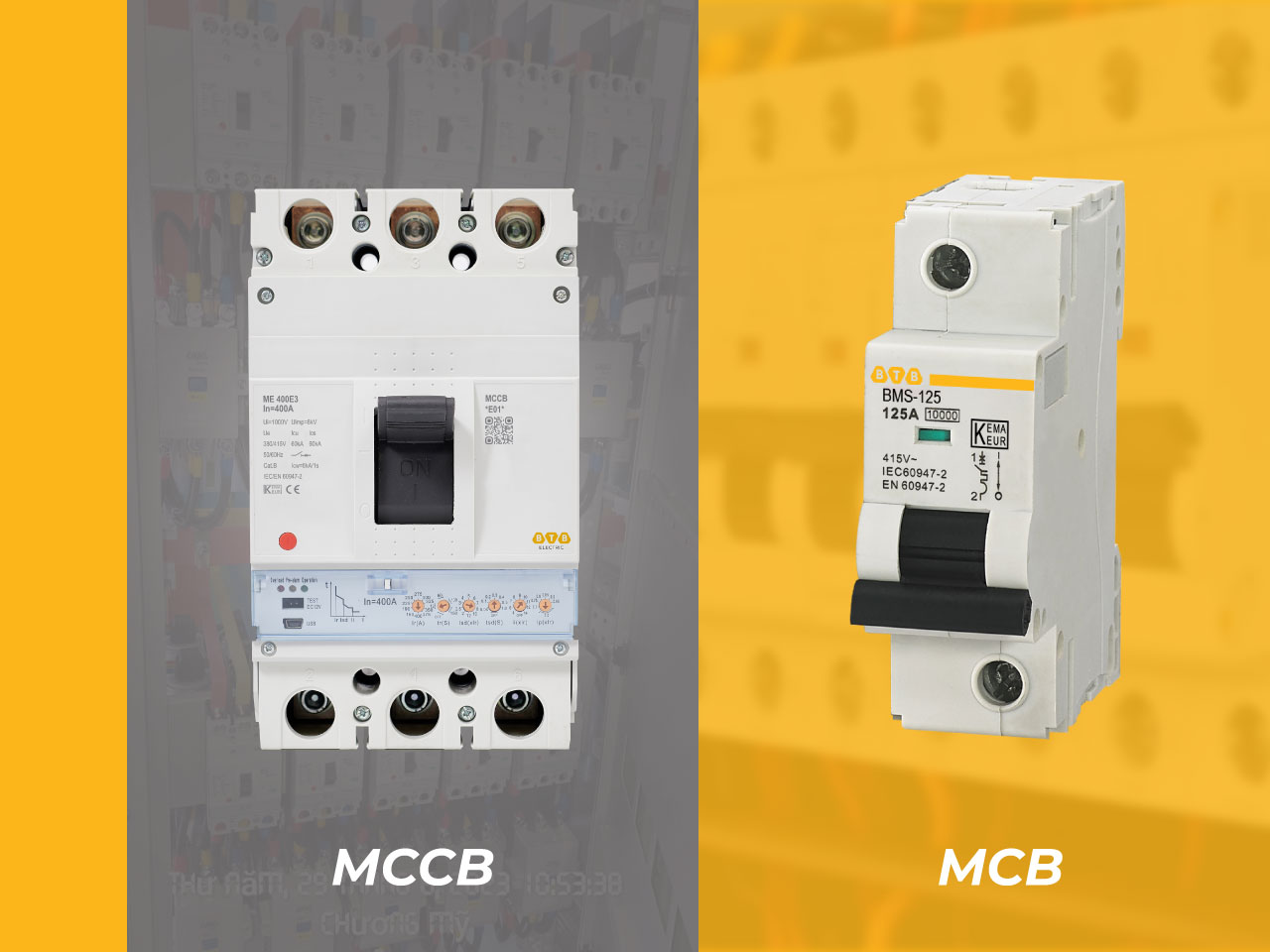
Both MCB (Miniature Circuit Breaker) and MCCB (Molded Case Circuit Breaker) are widely used circuit protection devices. However, they differ in several ways:
| Criteria | MCB | MCCB |
| Design | Compact modular (snap-in) | Integral molded body |
| Current Rating | Up to 125A | Up to 1000A or more |
| Interrupting Capacity | Max 10kA | Up to 100kA, adjustable |
| Pole Options | 1P, 2P, 3P, 4P | 3P, 4P only |
| Control | Manual only | Remote control available |
| Application | Residential, light commercial | Industrial and heavy-duty systems |
If you're dealing with residential systems, an MCB is typically the right choice.
Notes When Selecting and Installing an MCB
- Rated Current (In): Should be 15–20% higher than the total load current but lower than the cable's rated capacity.
- Short-Circuit Breaking Capacity (Icu/Ics): For residential use, 4.5kA–10kA is sufficient; higher ratings are needed in industrial settings.
- Type of MCB: Use 1P or 2P for single-phase systems, and 3P or 4P for three-phase systems.
- Brand Selection: Prioritize well-known, quality-certified brands.
At BTB Electric, we manufacture and supply high-quality Miniature Circuit Breakers in Vietnam under strict European standards, with over 40 years of experience in industrial electrical equipment.

Our MCBs feature a modern design with high-thermal resistance, low-water absorption thermoplastic casings for excellent dielectric strength. We offer 1P, 2P, 3P, and 4P models with rated currents from 1A to 125A, certified by KEMA-KEUR and tested by Dekra, Intertek and Underwriters Laboratory.
Learn more at: https://btb-electric.com/mcb/
Frequently Asked Questions about MCBs
Question 1: Does an MCB offer electric shock protection?
Answer: No. MCBs protect against overload and short circuits only. For shock protection, use an RCBO (Residual Current Circuit Breaker with Overload protection).
Question 2: Where should MCBs be installed in a house?
Answer: Based on load current and usage needs, MCBs are usually installed in distribution panels. For currents under 40A, install them at the sub-panel level. For higher ratings (e.g., 63A), use them as the main breaker at the service panel.
Question 3: Can MCB 2P be connected to a neutral wire?
Answer: Yes. MCB 2P can be wired with either two live wires or one live and one neutral wire.
Question 4: When should I use a 3P or 4P MCB?
Answer: Use 3P and 4P MCBs in three-phase 380V circuits with moderate loads, such as in workshops, pump stations, or small manufacturing units. For higher currents, choose MCCBs, which are more suitable for industrial applications.

